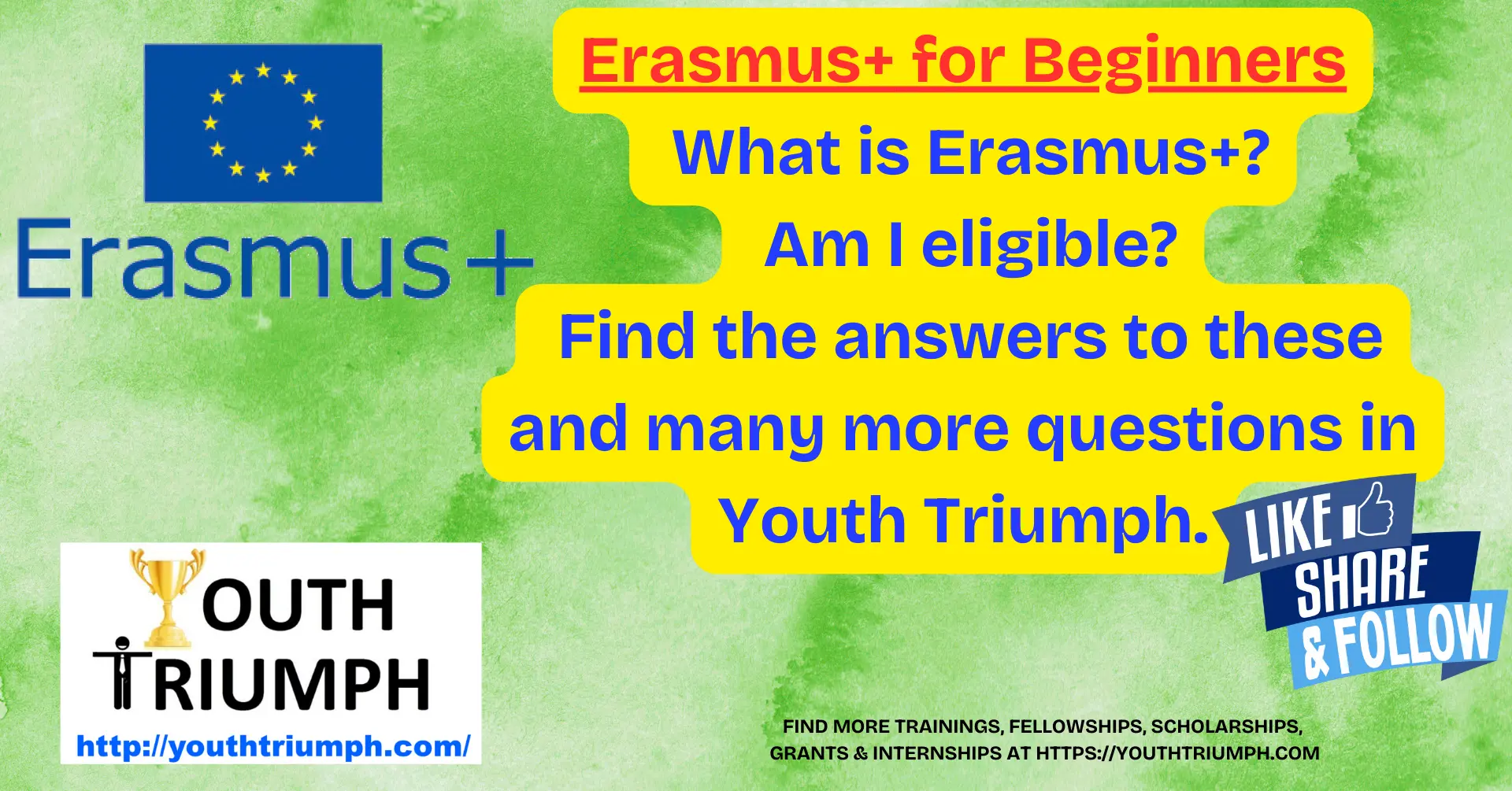
Erasmus+: A Gateway to International Education Opportunities
Imagine a study abroad program that helps you study, train, and grow—both personally and professionally. Even better, it lets you experience new cultures firsthand. That program is Erasmus+, the European Union’s leading initiative for education, training, youth, and sport.
In fact, this powerful European exchange program promotes global understanding. It also builds essential skills for today’s world.
In this article, we’ll break down Erasmus+ step by step. First, you’ll learn about its goals. Then, we’ll explore the benefits and the wide range of opportunities it offers. After that, we’ll guide you through the Erasmus+ application process. Finally, we’ll highlight its lasting impact on individuals and communities across Europe—and beyond.
What is Erasmus+? 🤔
Erasmus+ is the European Union’s program designed to support education 📖, training 🏋️, youth 👩🎓, and sport ⚽ across Europe. With a budget of €26.2 billion 💰 for 2021-2027, it nearly doubles the funding of its predecessor 🚀, reflecting the EU’s commitment to fostering learning and development.
It focuses on:
✅ Social inclusion 🏳️🌈
✅ Green 🌿 and digital 💻 transitions
✅ Promoting youth participation in democracy 🗳️
Originally launched in 1987 as a student exchange program 🎓, Erasmus+ now supports:
🔹 Vocational training 🛠️
🔹 Teaching exchanges 🏫
🔹 Youth projects 🌍
Today, it enables thousands of mobility experiences annually, benefiting individuals 👥 and institutions 🏛️ across Europe and beyond.
Objectives of Erasmus+ 🎯
The main goal is to support lifelong learning 📚, boosting:
✅ Mobility & Learning Opportunities ✈️📖
✅ Inclusion & Diversity 🌍🤝
✅ Digital Transformation 💻📡
✅ Green & Sustainable Practices 🌱🚆
✅ European & International Cooperation 🇪🇺🌎
Key Actions of Erasmus+ 🏆
🔹 Key Action 1: Learning Mobility of Individuals ✈️
Opportunities for:
🎓 Students spending semesters abroad
🏭 Vocational trainees interning in foreign companies
👩🏫 Teachers undergoing professional development
🌍 Youth workers & young people participating in mobility projects
🔹 Key Action 2: Cooperation Among Organizations & Institutions 🤝
Encourages partnerships for innovation and best practices:
🏛️ Universities collaborating on research 📑
🏢 Businesses working with schools 💼
🌍 Youth organizations fostering social integration 🎭
🔹 Erasmus + Key Action 3: Support to Policy Development & Cooperation 📜
Supports policy dialogue & reforms through:
📊 Research & analysis for better educational policies
🤝 Collaboration between governments, institutions & industries
🇪🇺 Initiatives that promote European values & civic engagement
Who Can Participate? 🏫🎒
🎓 Individuals:
✔ Students – Study abroad 🌍
✔ Trainees & Apprentices – Work placements 🏭
✔ Teachers & Lecturers – International teaching opportunities 👩🏫
✔ Youth & Youth workers – Community projects & training 🤹♂️
🏢 Organizations:
✔ Schools & Universities – Exchange programs 🏫
✔ Vocational Training Providers – International training initiatives 🛠️
✔ NGOs & Enterprises – Social & educational projects 🌍
Opportunities for Individuals 🌟
✅ Students & Trainees – Study or intern abroad 🎓💼
✅ VET Learners – Apprenticeships 🏭
✅ Staff Mobility – Teach or train abroad 👩🏫
✅ Youth Exchanges – Cultural experiences & networking 🌍
Opportunities for Organizations 🏛️
✅ Strategic Partnerships – Innovation & best practices 💡
✅ International Capacity Building – Work on a global scale 🌍
✅ Improved Education Quality – Through global cooperation ✨
How to Apply? 📝
🔹 For Individuals:
📌 Students – Contact your university’s Erasmus+ office 🏛️
📌 Staff – Ask your institution’s administration 👩🏫
🔹 For Organizations:
📌 Identify the right Key Action 🎯
📌 Check eligibility & funding rules 💰
📌 Apply via Erasmus+ & European Solidarity Corps platform 🖥️
Impact of Erasmus+ 🌍
✨ Personal Growth – Confidence & adaptability 💪
📈 Professional Development – Better career prospects 💼
🏛️ Institutional Benefits – Stronger international ties 🤝
🌱 Social Impact – Cohesion, citizenship & European identity 🇪🇺
Recent Developments 🔥
📈 Increased Funding – More financial support 💰
🌍 Greater Inclusivity – Open to diverse backgrounds 🏳️🌈
💻 Digital Transformation – Focus on e-learning & hybrid models 🎓
Conclusion 🎯
Erasmus+ is the EU’s commitment to education, training, youth, and sport 🏫⚽. It offers individuals & organizations opportunities for:
🚀 Growth
🌍 Global exposure
📈 Professional development
Call to Action 🚀
👉 Start your Erasmus+ journey today!
🔹 Individuals – Contact your Erasmus+ coordinator 📞
🔹 Organizations – Review the Erasmus+ Programme Guide 📑
✅ Enhance lives, open minds, and contribute to a dynamic Europe! 🇪🇺💙
About the Author 🏆
Georgi Michev – EU Funded Projects Expert (15+ years) & Project Manager (20+ years) 📖🌍. Passionate about lifelong learning & cross-cultural exchange 🤝✨.
✨ Follow Youth Triumph for updates! 🚀🚀🚀 Your journey starts here!
📢 Note: For the latest information and application deadlines, always check the official Erasmus+ website or your National Agency.
💡 In the context of “Erasmus+ For Beginners,” the term “for beginners” refers to individuals who are new to the concept of Erasmus+ 🌍 and are looking for an easy-to-understand, introductory guide 📖.
Specifically, it suggests that the content of this article will be designed to simplify the process of understanding Erasmus+ 💡. In particular, we’ll cover the basics such as how the program works ⚙️, what participants can expect 🧳, how to apply 📝, and the different types of funding available 💰.
Ultimately, the goal is to demystify the Erasmus+ program 🎓 and help those who have little or no prior knowledge about it get started on their journey with confidence 🚀. In other words, this term signals that the content is accessible, clear, and welcoming for people who are just beginning to explore these opportunities! 🌟✨
Leave a Reply